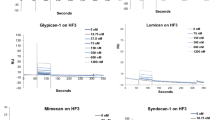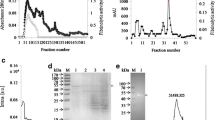Abstract
Mammalian blood coagulation is based on the proteolytically induced polymerization of fibrinogens. Initially, fibrin monomers noncovalently interact with each other. The resulting homopolymers are further stabilized when the plasma transglutaminase (TGase) intermolecularly cross-links ε-(γ-glutamyl)lysine bonds. In crustaceans, hemolymph coagulation depends on the TGase-mediated cross-linking of specific plasma-clotting proteins, but without the proteolytic cascade. In horseshoe crabs, the proteolytic coagulation cascade triggered by lipopolysaccharides and b-1,3-glucans leads to the conversion of coagulogen into coagulin, resulting in noncovalent coagulin homopolymers through head-to-tail interaction. Horseshoe crab TGase, however, does not cross-link coagulins intermolecularly. Recently, we found that coagulins are cross-linked on hemocyte cell surface proteins called proxins. This indicates that a cross-linking reaction at the final stage of hemolymph coagulation is an important innate immune system of horseshoe crabs.
Similar content being viewed by others
Author information
Authors and Affiliations
Corresponding author
Additional information
Received 27 October 2003; received after revision 25 November 2003; accepted 1 December 2003
Rights and permissions
About this article
Cite this article
Osaki, T., Kawabata, S. Structure and function of coagulogen, a clottable protein in horseshoe crabs. CMLS, Cell. Mol. Life Sci. 61, 1257–1265 (2004). https://doi.org/10.1007/s00018-004-3396-5
Issue Date:
DOI: https://doi.org/10.1007/s00018-004-3396-5




